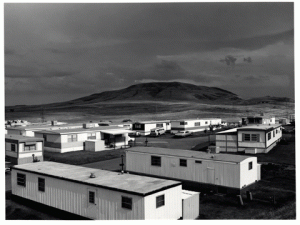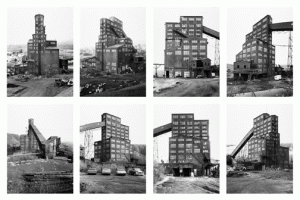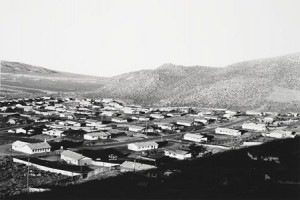The New Topographics: Photographs of a Man-Altered Landscape was a group show put together in January 1975, help
at the George Eastman House in Rochester, visit this
NY, that embodied the changing face of America’s relationship with its landscape. Participants in the show were: Robert Adams, Lewis Baltz, Bernd and Hilla Becher, Joe Deal, Frank Gohlke, Nicholas Nixon, John Schott, Stephen Shore, and Henry Wessel.
The work is described as the intersection of fine art photography and conceptual art. The prints were stark, intentionally simple, most in black-and-white as if only “topological maps.”
The uniqueness of this show was its aesthetic. Landscape photography has traditionally been (and remains for many) about capturing unsullied nature, awe-inspiring vistas, and landforms. New Topographics was the anti-thesis of this concept. It showed the ugly side of the human-impact on the landscape. The photographers documented recent urban and suburban developments, mining operations, dying and dusty main streets, abandoned factories, and discarded objects. Essentially these photographers captured America in its becoming rather than presenting an idealized or nostalgic view.
It was clear by the mid-1970’s that the emerging environmental movement was proving influential and a growing cynicism about development and urban planning had set in. The impacts of the previous twenty-five years of rapid development across America had begun to be acknowledged. In the northeast and great lakes, the process of deindustrialization was beginning to set in as well. These perceptive landscape photographers began to recognize these realities at a crucial juncture.
After New Topographics, its participants continued to explore their line of inquiry and new photographers continued along this trajectory. Artists like Jeff Brouws, Ed Burtynsky, Richard Misrach inherit the legacy of New Topographics in their documentation of disappearing towns, environmental devastation, and changing landscape at the hands of our culture of consumption.
Urban decay is now even more a part of daily life as our cities in many parts of the country rot in place. The aesthetic of decay rose to prominence with street culture, hip-hop, graffiti art, and grunge. Even the most chic attempted to aestheticize abandoned buildings, self-proclaimed urban explorers document the decay in publications like Polar Inertia (www.polarinertia.com), and any number of coffee-table books have been published with this particular perspective. Even the suburbs that were “shiny and new “ when documented by the artists in New Topographics exhibit are beginning to show their age and in certain places (like the central valley of California) they are being abandoned.
New Topographics had a critical eye towards the environmental and cultural transformations occurring at the time. It captured the changing face of the American landscape and with this recognition it also changed the relationship that photographers had with documenting and exploring the landscape.
Two thirds of the original show is at the SFMOMA, on view until October 3, 2010.


